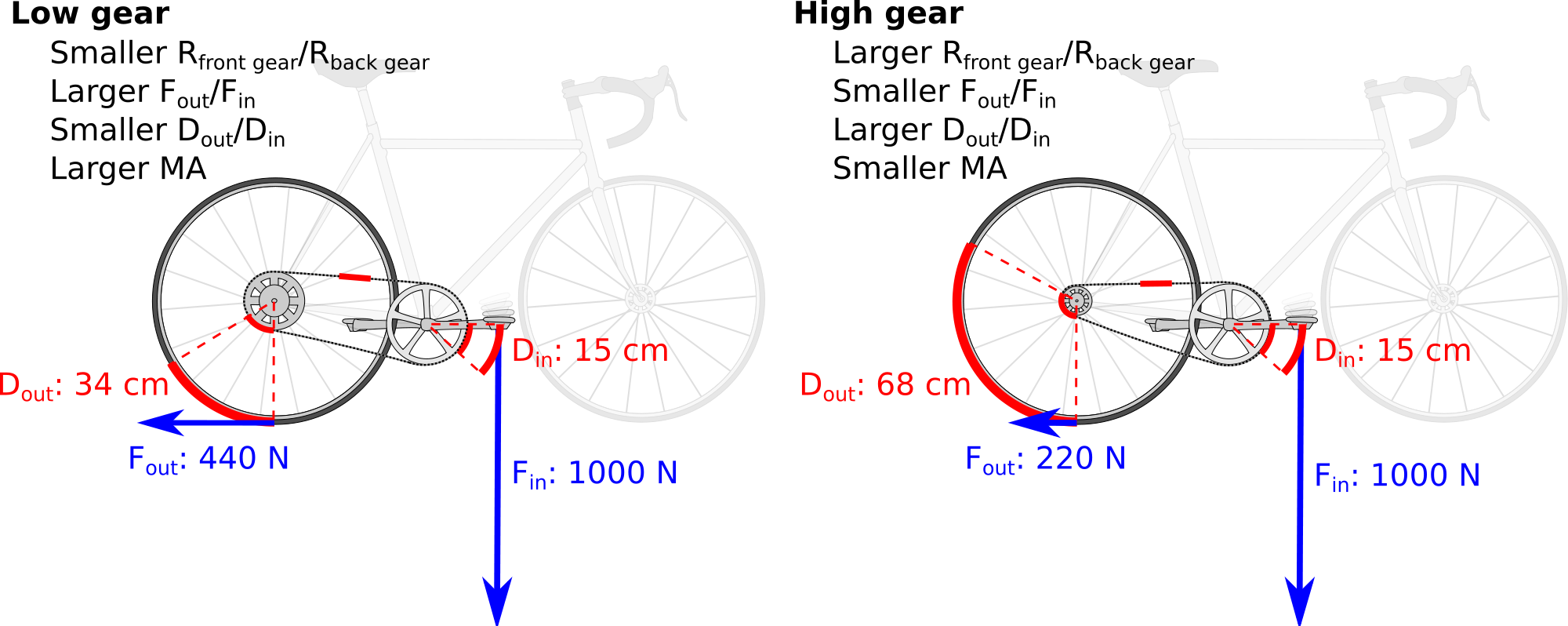Lets say I am in the hardest gear on each which means I would be riding on the 50 tooth ring on the front and the 11 tooth ring on the back. 3 is green 2-3 blue and below 2 red.
 Velodrome Shop Track Cycling Gear Chart
Velodrome Shop Track Cycling Gear Chart
Shows speeds at different cadences in your highest and lowest gear.

Bike gear ratio. 50 11. Shows gear ratio difference between two adjacent sprockets. Common gear ratios are 39t or 42t for the inner ring and 52t or 53t for the outer.
The bicycle gear calculator displays graphically the gearing of derailleur gears and gear hubs. If youre using a Schlumpf Drive plus an internal-gear rear hub you should enter the actual number of teeth of the front chainring for the first chainring and this number of teeth times the Schlumpf ratio for the second chainring. A standard double set-up is usually the preferred choice for racing offering the largest chainring sizes for the.
The first number xxyy refers to the number of teeth sharp pointy things on the chain ring by the pedals. But I frequently went back and forth between fourth and fifth gear which is an indication that the optimal bicycle gear ratio lies between 211 and 253 for standard road use. So we use what we feel is the perfect ratio for urban commuting trick riding and performance.
The optimal gear for the bike would be the fourth gear 38-18. For example when a 53T chainring is. The yy second number refers to the number of teeth in the rear cog name for smaller gear ring attached to the back wheel.
To get our gear ratio we divide the number of teeth on the front by the number on the back. Simple just divide your rear cog size from your front. 11 rijen Colors group similar values.
Moving your mouse over the ratio will show speed you will achieve by pedaling at 100 rpm. We know what the angular tooth spacing of a bicycle gear is since chains are a standard size but to calculate along this path much further would only serve to keep us at our desks calculating rather than actually riding. 15 rijen How to calculate bicycle gear ratio.
Colors group similar values. I also know that with heavy climbs on the trail the 136 was way too big. Bicycle gears began with the introduction of the train drive making the bicycle a lot more efficient.
Unfortunately this discussion has been more on the academic side so a gearing ratio based on the radius of the gears is hardly practical when gears are measured in number of teeth. If your biggest chainring has 52 teeth and youre turning a 26-tooth cog at. 80 is green 50ish-80 blue and below 50 red.
Calculating the number of wheel revolutions produced by a bikes gearing is simply a matter of determining the ratio of the chainring to the rear sprocket. The gear ratio combined with the circumference of your wheel and tyre determines how far you will travel with each revolution of the cranks. Percentage between cassette sprockets.
I definitely need a sub-100 gear ratio for really steep climbing. The majority of bikes are now supplied with an 11-28t cassette as this offers a sensible spread of gears for flat riding and climbing with relatively equal shifts between each sprocket. At a basic level gears allow a rider to vary the effort required at the cranks to turn the rear wheel for a given speed.
The ratios are 040 for the Mountain Drive 165 for the Speed Drive and 250 for the High Speed Drive. Historically bikes were fixed gear meaning one revolution of the pedals was equal to one revolution of the back wheel for a 11 ratio. 10 rijen Gear inches wheel diameter in inches number of teeth in front chainringnumber of teeth in.
It can be used to compare different setups to find the optimal gearing for all kinds of bicycles.
